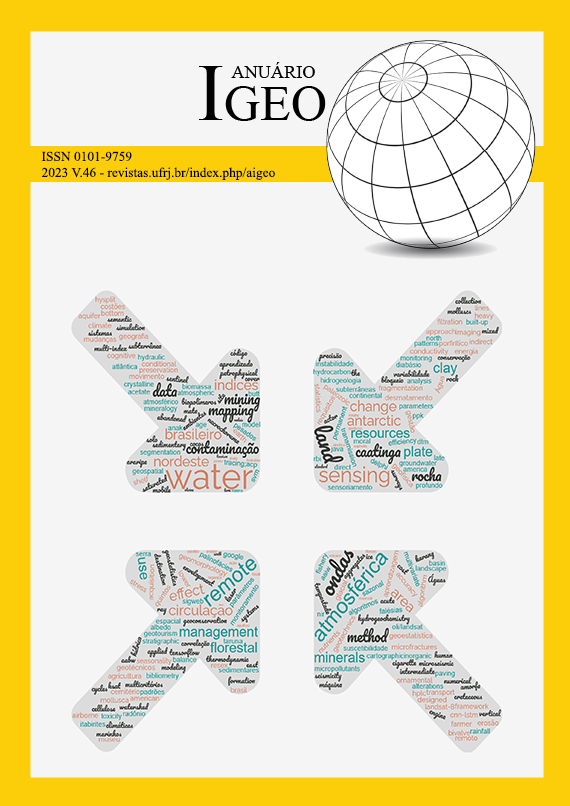Water and Geological Assessment in the Micro-Watersheds of the Alkaline Rocks of Tanguá and Soarinho in Rio de Janeiro State
DOI:
https://doi.org/10.11137/1982-3908_2023_46_55780Keywords:
Water quality, WQI, Mining activityAbstract
Alkaline bodies of Tanguá and Soarinho in Rio de Janeiro present drainage areas that form the sources of the Soarinho and Caceribu Rivers. Due to its water and geological importance, we sought to investigate the relation between alkaline rocks and water bodies and the possible consequences of mining activity, as well as the use and occupation of land in water quality. Initially, the magnetometric profile was traced to confirm whether the locations selected for sample collection were located in the alkaline region. Then, water and sediment collections were carried out from the bed at three points on the Soarinho River and one point on the Caceribu River, all inserted in the drainages of the Soarinho and Tanguá alkaline massifs. Parameters necessary to calculate the Water Quality Index (WQI) and those related to contamination by mining activities were analyzed. Chemical analysis of the bed material sought to identify the deposition of contaminants. The context of alkaline rock interaction and water influence is confirmed through geophysical and lithogeochemical techniques through location maps and comparative results of bed material and direct samples of alkaline rocks that showed similar constitutions. In general, the WQI presented a median result, meeting the main requirements for appropriate water for conventional treatment aimed at public supply, and no indicators of contamination by mining activities were found, however, at point P3, representative of the headwaters of the Soarinho River, there were significant changes in BOD and fecal coliforms indicating direct discharge of domestic sewage in a nearby location. The results of the analyzes downstream of this point demonstrate the water bodies dilution capacity.
Downloads
Downloads
Published
How to Cite
Issue
Section
License
This journal is licensed under a Creative Commons — Attribution 4.0 International — CC BY 4.0, which permits use, distribution and reproduction in any medium, provided the original work is properly cited.















